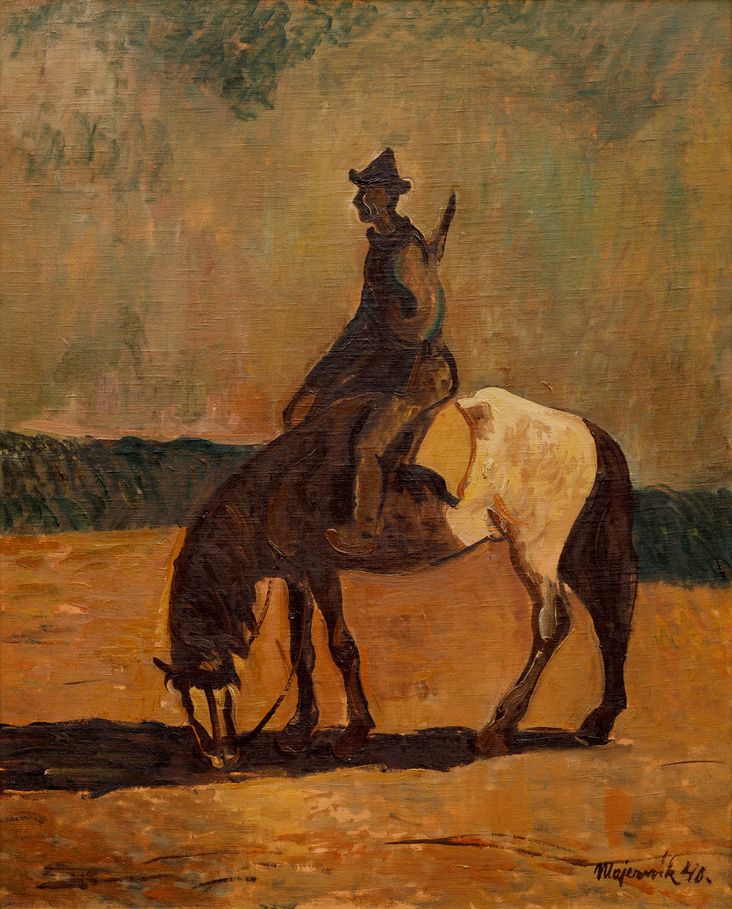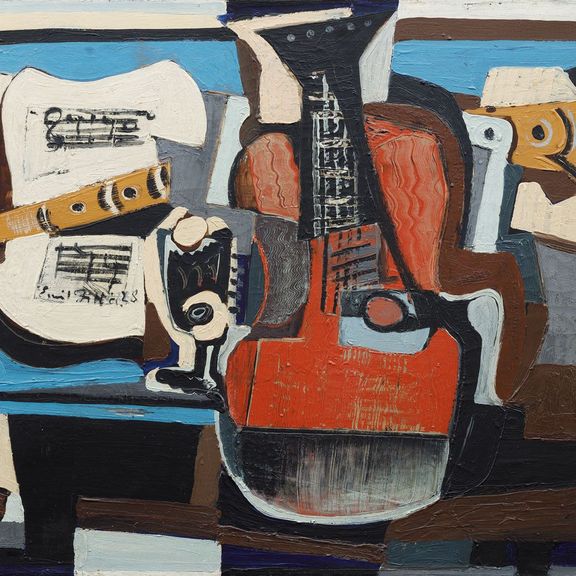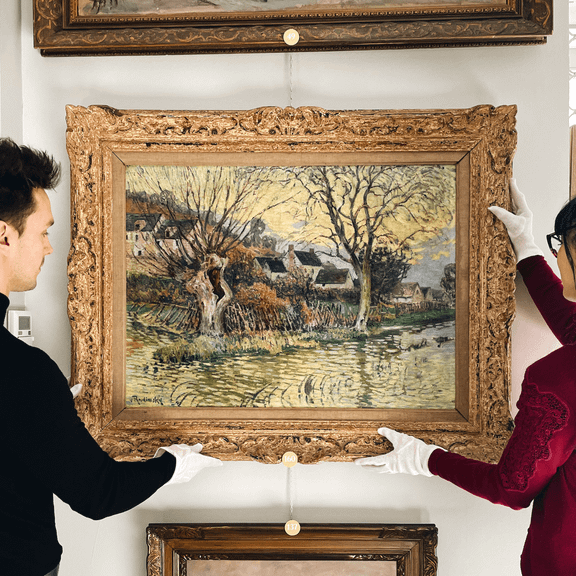
oil on canvas
1940
lower right
81 × 65 cm
framed
This unique painting, very rare on the Czech art market, represents one of the most interesting painters of the interwar generation, Cyprián Majerník. Originally from Slovakia, Majerník settled in Prague during his studies at the Prague Academy and lived there his entire, unfortunately short, life. Although he significantly influenced the artists of his generation and the next with his work and strong personality, today, surprisingly, he is rather out of the interest of art experts. Jan Zrzavý remembered him: “For many years of my artistic-social life, I have never known a man so noble, so considerate, kind, and gentle. […].” It is therefore clear that he was a prominent figure on the Czech cultural scene. The anxiety of the pre-war and war period was significantly reflected in Majerník’s work. He perceived the fascist ideology and senseless violence of the war with great sensitivity, and understood their reflection and criticism through art as a necessity and a mission. One of his most frequent subject-matters was Don Quixote, who Majerník transformed from a dreamy hero, struggling in vain, fighting the real world, to a character who, in his benevolence, became for the artist a kind of embodiment of the faith. The character of Don Quixote and especially the symbol of his emaciated horse were reflected in a number of the artist’s paintings and drawings, although often entitled Refugees, Emigrants, or Exiles. This way, he wanted to draw attention to the social aspects of the current situation. Majerník’s work thus combines a highly appealing character with a noble artistic expression, which is typical of the Generation 1909, to which the painter belonged. His brushwork was relaxed and thick layers of colour stroke by stroke created the shapes of figures and animals. Although, due to his illness, Majerník did not have time to create much, the presented painting is highly advanced and expressively clear. It is considered to be an absolutely unique example of his exceptional talent, summarising the fundamental principles of his work. On the reverse is a monochrome painting of a pair of horses with a rider, which apparently remained unfinished, yet it can be considered an almost full-fledged painting. This work is reproduced in black and white in the artist’s monograph (K. Šourek: The Work of Cyprián Majerník, Prague 1946, cat. No. 36) and also in the monograph published in Slovakia in 1981 (L. Peterajová: Cyprián Majerník, cat. No. 44). As evidenced by the stamp on the reverse of the stretcher, the painting was exhibited in 1940 in Umělecká beseda, (Cyprián Majerník: Exhibition of Paintings, cat. No. 37). Assessed during consultations by prof. J. Zemina and Ing. M. Hodoš. The expertise by PhDr. K. Bajcurová, CSc., is attached.







